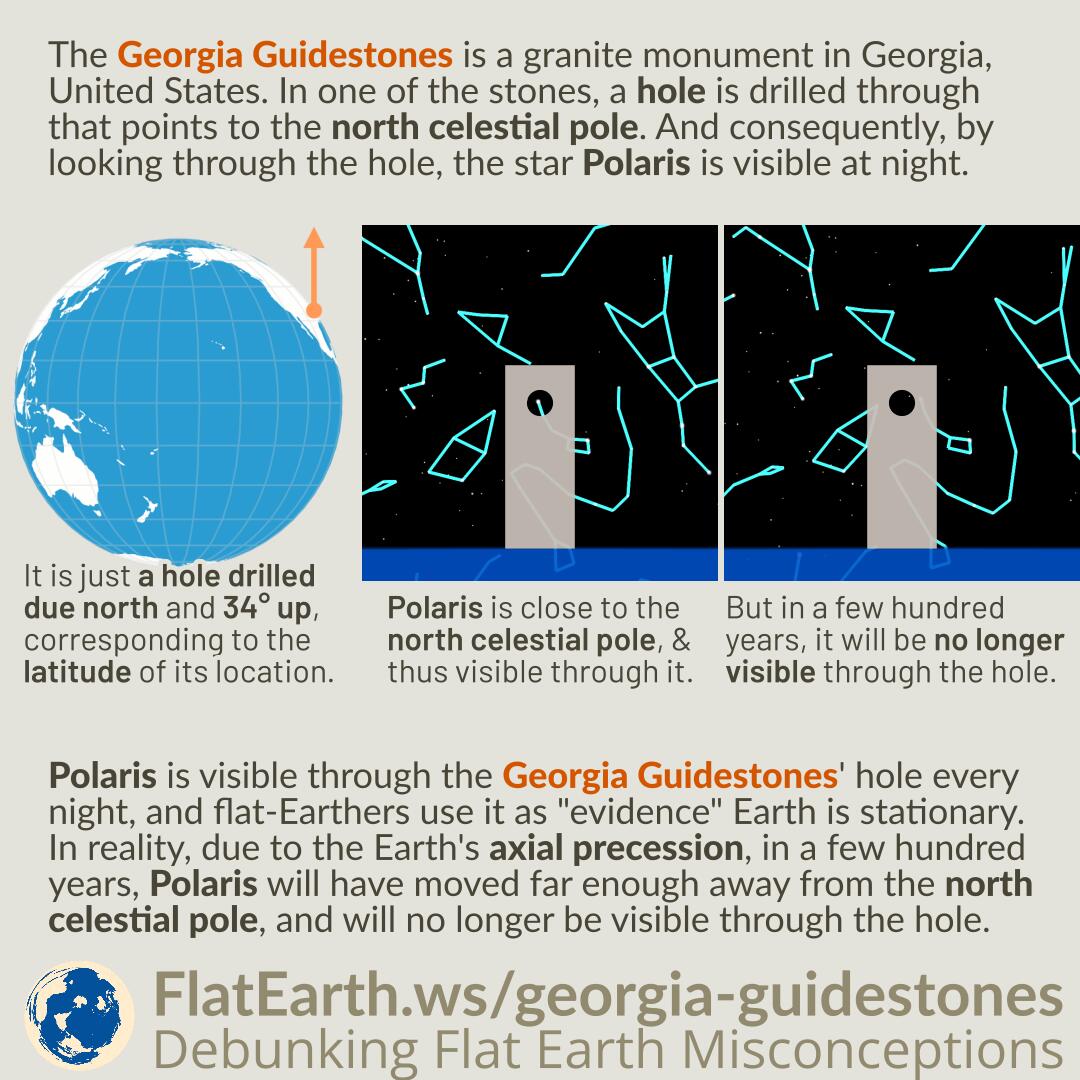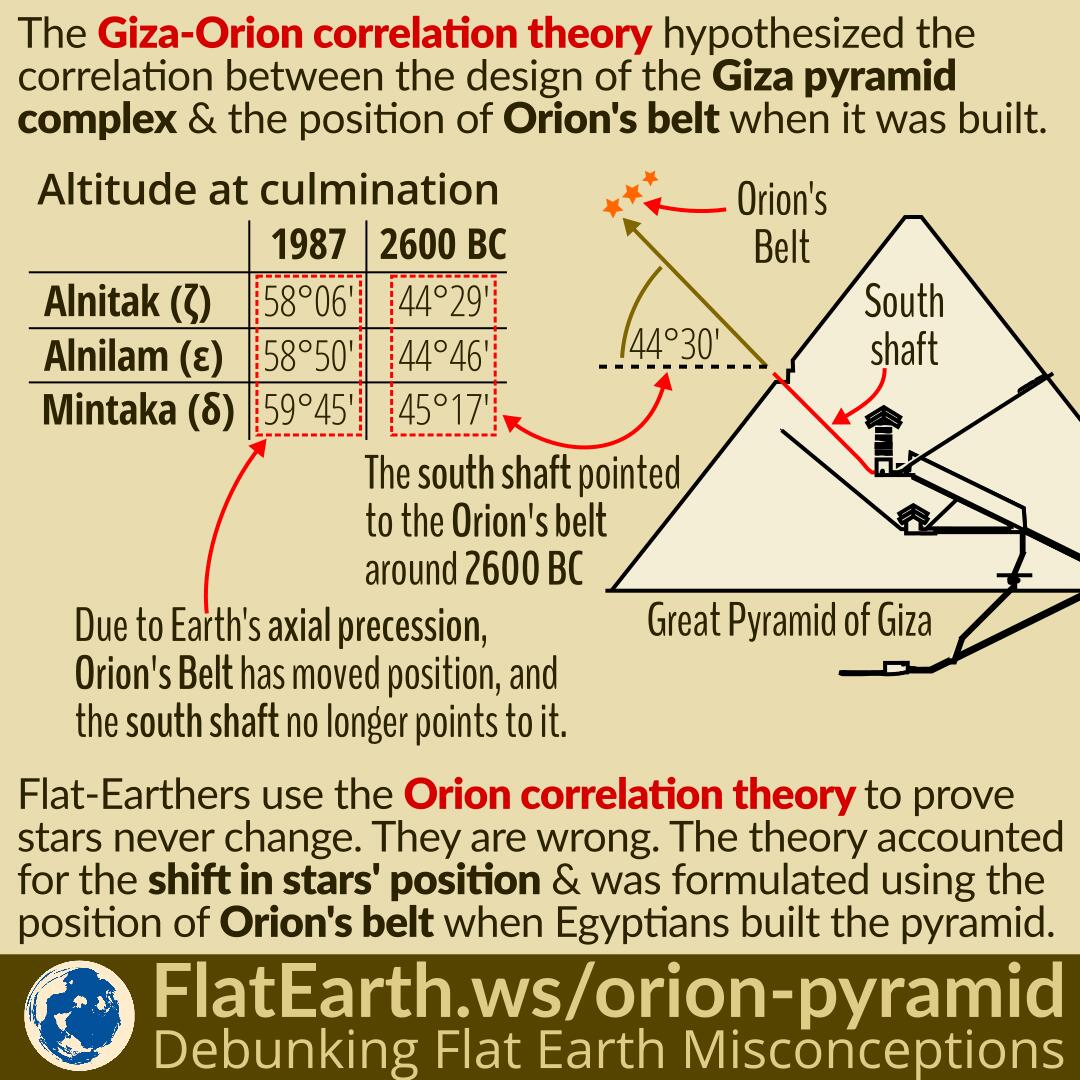The Georgia Guidestones is a granite monument in Georgia, United States. In one of the stones, a hole is drilled through that points to the north celestial pole. And consequently, by looking through the hole, the star Polaris is visible at night.
Polaris is visible through the Georgia Guidestones’ hole every night, and flat-Earthers use the fact as “evidence” that Earth is stationary. In reality, due to Earth’s axial precession, in a few hundred years, Polaris will have moved far enough away from the north celestial pole and will no longer be visible through the hole.





